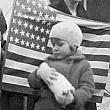What Elimination of the Liquor Traffic Means to Grand Rapids
by Winthrop D. Lane
When Grand Rapids went dry, at midnight, April 30, 1918, 160 saloons in the city were selling liquor. There were seven wholesale liquor dealers. Three breweries were turning out large quantities of beer and other alcoholic beverages. Out-of-town brewers had several local agencies. In addition there were forty or fifty halls, owned by private societies and equipped with bars, over which intoxicating liquors were sold to all comers. A few restaurants and hotel dining rooms sold liquor.
This was the equipment for drinking. At five minutes to twelve it was going full blast, with the exception of the breweries and wholesale liquor houses that had prepared for the inevitable some time before. Glasses were clinking in the saloons and halls, and the restaurants had many diners. When people woke up next morning the whole plant had stopped running. The change was almost that sudden and dramatic. The saloon doors had ceased to swing and the restaurants served only water.
Since then the change has been carried further. Two breweries now manufacture soft drinks and the third has gone out of business or is preparing to do so. The saloons have been replaced by other businesses. The halls have stopped selling liquor and most of them have ceased to exist. The entire equipment for the manufacture and sale of alcoholic beverages as been either scrapped or diverted to other uses.
An interesting history preceded this. In 1910 Kent County, where Grand Rapids is situated, voted wet in a local option election by 7,000 majority. Six years later, in 1916, when the state prohibition amendment was before the people of Michigan, it voted dry by 6,000 majority. Grand Rapids was the largest city in the country at that time that had given majority itself against the saloon; it went dry by 3,000. The whole state went dry in that election by approximately 100,000. Three years later, in 1919, after prohibition had been in effect for nearly a year, the state voted again on a constitutional amendment to legalize the sale of beer and light wines. It reasserted its dry convictions by 200,000 majority.
The Survey, November 6,1920

 facebook
facebook

